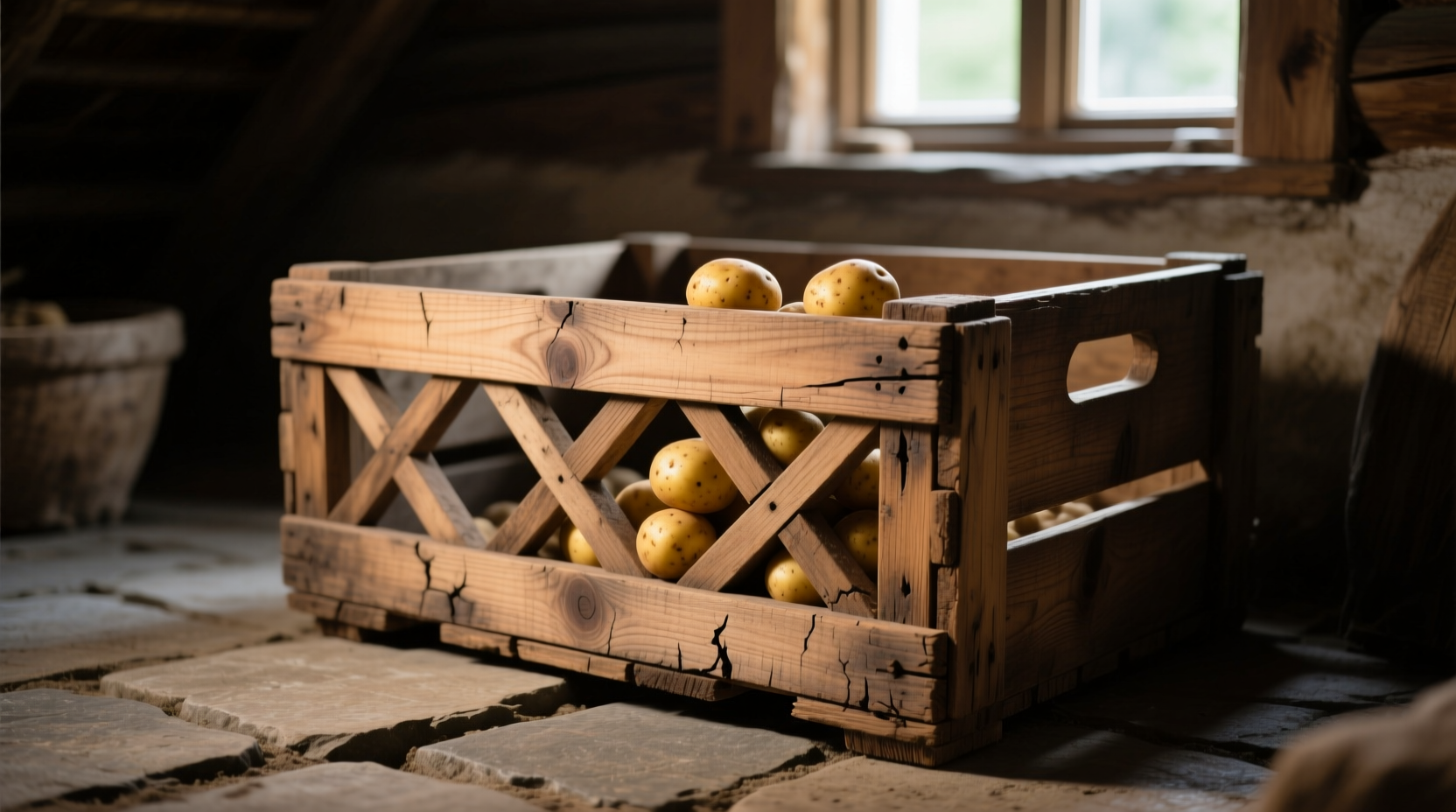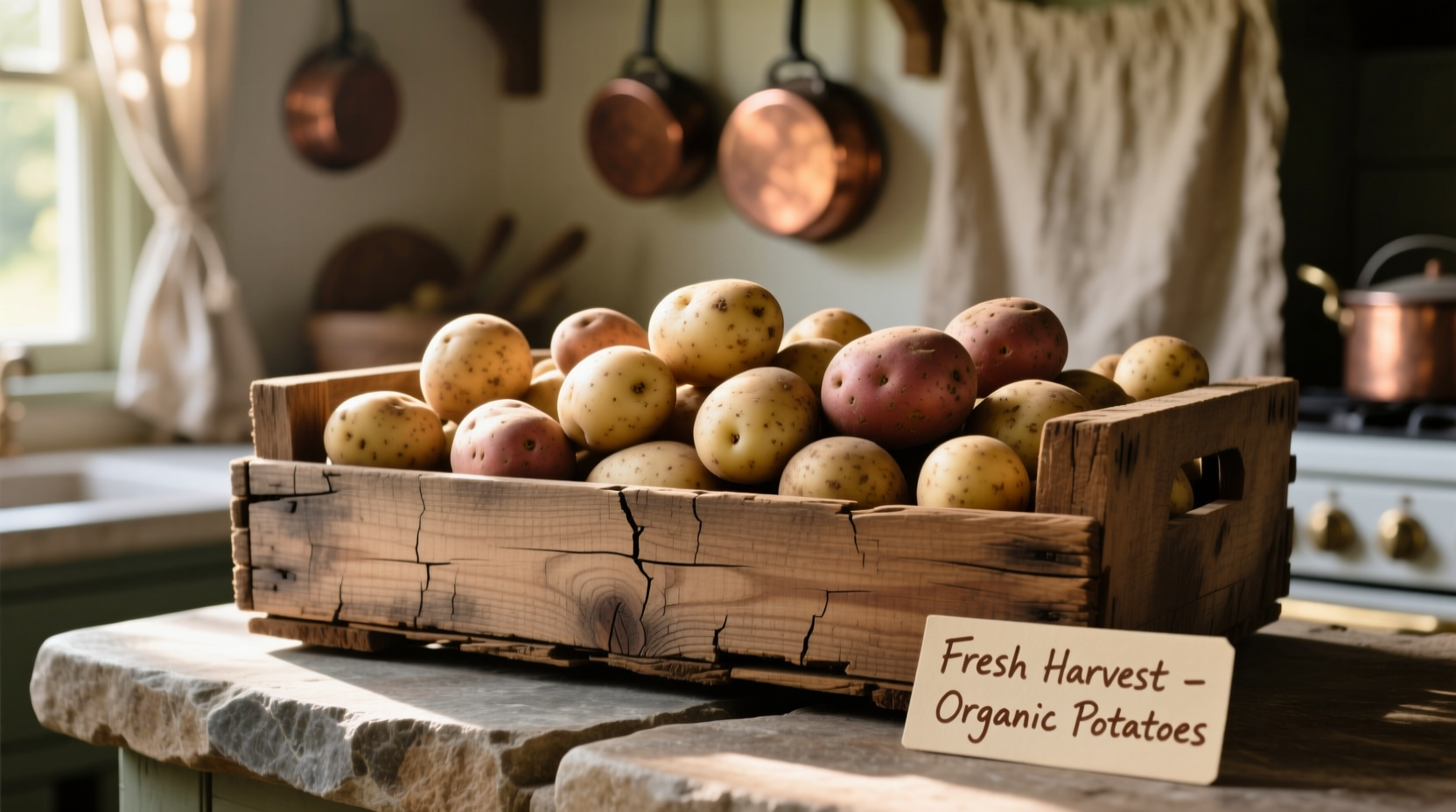Ever wonder why your potatoes sprout or turn green within weeks of bringing them home? The answer lies in improper storage conditions. Potatoes require specific environmental factors to maintain freshness, and a well-designed potato box addresses these needs through centuries of agricultural wisdom refined into practical modern solutions.
The Science Behind Potato Storage Failure
When stored incorrectly, potatoes undergo three problematic transformations:
- Greening—exposure to light triggers chlorophyll and solanine production (a natural toxin)
- Sprouting—warm temperatures activate growth hormones
- Moisture loss—improper humidity causes shriveling or mold
According to USDA agricultural research, properly stored potatoes retain 95% of their nutritional value for up to 90 days, while refrigerated potatoes develop higher sugar content that affects cooking performance. The University of Idaho's Potato School confirms that temperatures below 40°F convert starch to sugar, creating undesirable flavors when cooked.
| Storage Method | Shelf Life | Quality Preservation | Common Issues |
|---|---|---|---|
| Potato box (ideal conditions) | 2-3 months | 95%+ | Minimal |
| Refrigerator | 1-2 months | 70% | Sweetening, texture changes |
| Countertop in bag | 2-3 weeks | 50% | Sprouting, greening |
| Pantry in plastic container | 3-4 weeks | 65% | Moisture buildup, mold |
What Makes a True Potato Box Different
Not all containers marketed as "potato boxes" deliver optimal storage. Authentic designs incorporate three critical elements developed through Andean agricultural traditions:
- Ventilation system—strategic airflow channels prevent moisture accumulation while maintaining humidity (85-90%)
- Light-blocking construction—opaque materials prevent chlorophyll development
- Temperature-stable materials—wood or ceramic maintains consistent coolness better than plastic
Historical research from the International Potato Center shows Andean farmers developed the first specialized potato storage solutions over 7,000 years ago—underground pits lined with straw that maintained stable temperatures year-round. Modern potato boxes evolved from these principles, with contemporary designs incorporating improved ventilation while preserving traditional wisdom.

DIY vs. Commercial Storage Solutions
You don't need to purchase a specialized container to store potatoes properly. Consider these practical options:
Effective DIY Solutions
- Modified cardboard box—line with newspaper, punch ventilation holes, store in dark pantry
- Ceramic crock—naturally regulates humidity, keep lid slightly ajar for airflow
- Wicker basket—excellent natural ventilation, cover with breathable cloth
When Commercial Boxes Excel
Commercial potato storage containers become worthwhile when:
- You store large quantities (10+ pounds regularly)
- Your home environment has high humidity fluctuations
- You lack a consistently cool, dark storage space
Step-by-Step Potato Storage Protocol
Follow these steps for maximum shelf life and quality preservation:
- Sort immediately—remove any bruised or damaged potatoes that could spoil others
- Never wash—excess moisture accelerates decay (brush off dirt instead)
- Cure new harvests—store at 50-60°F with high humidity for 10-14 days before long-term storage
- Check weekly—remove any developing soft spots before they spread
- Store separately—keep away from onions (their gases accelerate sprouting)
Special Considerations by Potato Type
Different potato varieties have unique storage requirements:
- Russets—store best at 45-50°F, last 2-3 months
- Yukon Golds—more sensitive to cold, best at 48-50°F, 6-8 week shelf life
- Red potatoes—tolerate slightly higher temperatures (50-52°F), 8-10 week storage
- Sweet potatoes—require warmer storage (55-60°F), never refrigerate
The University of Maine Cooperative Extension emphasizes that sweet potatoes require completely different storage conditions than regular potatoes—a common mistake that leads to premature spoilage. Their research shows sweet potatoes stored below 50°F develop internal chilling injuries that accelerate decay.
Avoid These Common Storage Mistakes
Even with a proper potato box, these errors compromise your harvest:
- Storing near heat sources (above refrigerators, near stoves)
- Keeping in sealed plastic bags (traps moisture and ethylene gas)
- Storing with onions (accelerates sprouting in both)
- Washing before storage (introduces excess moisture)
- Ignoring early signs of spoilage (one bad potato spoils the bunch)
Food safety experts at the National Center for Home Food Preservation warn that improperly stored potatoes can develop harmful levels of solanine—especially when green patches appear. Their guidelines recommend discarding any potatoes with significant greening rather than attempting to peel away affected areas.











 浙公网安备
33010002000092号
浙公网安备
33010002000092号 浙B2-20120091-4
浙B2-20120091-4